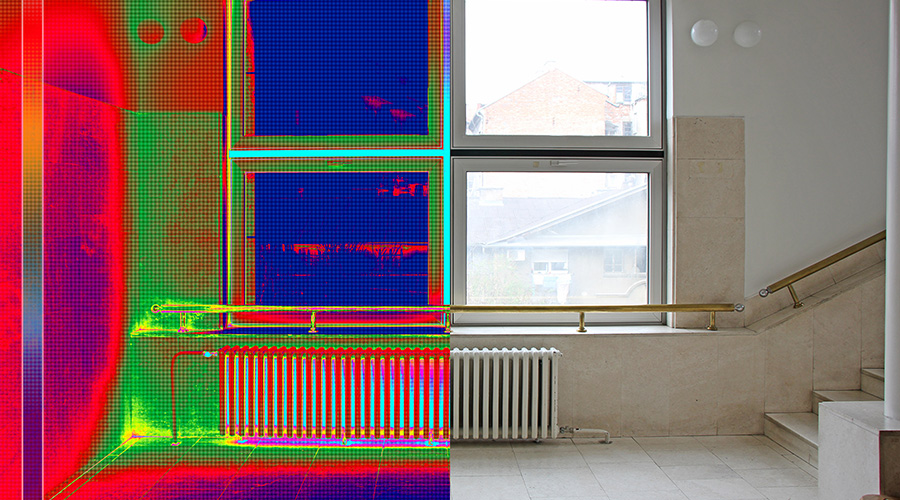Facility Professionals Discuss Managing Retrofits
By Chris Matt, Managing Editor - Print & E-Media
OTHER PARTS OF THIS ARTICLEPt. 1: This Page
*
Alan Roddy, Chief of Facilities, U.S. Army Aeromedical Research Laboratory, Fort Rucker, Ala.
*
Dave Bird, Director of Plant Operations, A.O. Fox Memorial Hospital, Oneonta, N.Y.
*
Bert Gumeringer, Director of Facilities Operations, Texas Children’s Hospital, Houston
As part of a renewed focus on existing commercial and institutional facilities, maintenance and engineering managers — and front-line technicians — are being called upon to spearhead retrofits that yield myriad benefits. To effectively manage retrofits, managers are developing strategies to properly allocate staff and resources and limit downtime and disruption — key steps to successful projects.
What sparked the organization's decision to tackle the project?
BIRD: We had a lot of roof leaks. The building was built in two phases. The first phase was in the late 1960s, and the second one was in the late 1980s. They were old buildings, and the roof was some tar and built-up roofing. There were a lot of leaks and no insulation. We really had to do something. Cash flow was a problem, and capital money was short. We were going to do it in phases, and then I contacted the hospital financial group — Hospital Financial Services Corp. (a national organization that administers a privately funded grant program to help facilities decrease energy use and improve efficiency) — and they had grants and low-interest loans for energy-saving projects. I got the information, and we could get a new roof and some new insulation put on the roof to save us money, as far as air conditioning and heating. That's what really got us going, that we could get the whole roof down with very little outlay from us.
RODDY: I got here about seven years ago. The whole infrastructure just fell apart in the place. So I tackled that first (which resulted in about $40 million worth of retrofits over seven years). I went after all the old equipment in the building. The equipment was all beyond its life expectancy. When (an engineering firm) came down to do a building survey, they came up with a book of stuff and what condition it was in. It was a real help by having an outside engineering staff come in and give me some ideas.
GUMERINGER: We were really looking for additional ways to reduce our energy costs. We had done a lot of things with chilled water — Delta T optimization was low-hanging fruit — and we needed to look elsewhere. That launched us on a path to get involved in a larger-scale retrocommissioning project (1.2 million square feet of space), where we looked at the performance of every air handler in the facility, and we looked at the performance of every VAV (variable air volume) box. We had a company come in, and we developed a very large retrocommissioning scope to identify various projects for us.
What was your role — and your staff's role — in planning and carrying out the retrofit?
RODDY: I write the initial statement of work, and then I get some ideas for what the price is for these jobs. I have a handle on how much it's going to cost. I have three contract engineers here right now. They've been helping me do the quality assurance on it. Without them, I wouldn't have been able to do it.
GUMERINGER: My role has been more at a strategy level — identifying what we should look at and helping quantify those things that have the biggest return on investment. My staff has really been involved from the standpoint of they assist the retrocommissioning people in the field with access to all of our equipment and drawings. They were adjuncts to the retrocommissioning team. In the process, they have enhanced their knowledge of how they need to operate systems in the future.
BIRD: I was the point man. I dealt with the financial people (Hospital Financial Services Corp.). Being part of this was a grant, and the rest was a low-interest loan, they have a vested interest in it. They provide the specifications that we approve. They set up all the architectural plans, and they have contractors. Of course, we approve all of that, but they do all that legwork for us. That's all part of the grant money. My role was getting them in here looking at the project and getting approved for funding. And then my role was coordinating the construction. As far as the maintenance crew, they were getting (project team members) access to the roof and to the utilities. (Contractors) came in, did the whole job, and I met with them on a daily basis. Other than the planning and the paperwork, once the project started, it was standing back and keeping an eye on things.
What type of communication did you have with architects, contractors and other third parties for the retrofit?
GUMERINGER: When you bring somebody in to look at your systems, they really don't have a good idea of what some of your issues are. Having some very simple discussions with our engineering staff really began to help our retrocommissioning folks narrow their focus down. There are a lot of things you can look it, but we wanted to get the things that had the quick ROI on them.
BIRD: We basically set the specs, even though (the Hospital Financial Services Corp.) wrote them. We determined the type of roof and what we wanted to do. They took care of designing it. Every day they were here working, we had a quick meeting in the morning to see how things were going.
RODDY: When we had our meetings, we put all our contractors on notice that we were going to have Plans A, B and C. If they could not work that day or something came up unexpectedly, I wanted them to be able to go to another part of the building to keep their people busy. All contractors did that, and we had about five contractors working at one time here. We had a flow chart with all the contractors on there so we could track their progress. We can look at the chart and see if anyone is behind.
What challenges did you face in obtaining funding for the project or selling the project to top management?
RODDY: On one of the lighting projects that we incorporated when I first got here, I did an estimate on replacing about 1,600 lights. That was one of the projects that got consolidated. It had been on the books for four years. I had gone in for funding on it twice before, and both times it got kicked off at the last minute. But it was a project that was going to pay for itself in seven years. I filled out the government chart that determined what the payback would be based on energy savings. We got all the fixtures changed, and that's going to be a big savings.
BIRD: It was very streamlined. We filled out the paperwork and met with the chief financial officer of the hospital. I had full backing from upper management. This was a big boost to us that we could get this roof put on with very little money coming out of our coffers at that time. They were behind me 100 percent. It makes it a little easier because I report to the vice president of long-term care, and it was his building we were putting the roof on. They did all the calculations of what we could expect from savings from (eliminating) heat loss and air conditioning loss. I had good buy-in from senior staff, and I would give them a weekly update on how things were going. I had great cooperation from everyone.
GUMERINGER: It was not a tough sell. We had engaged our senior leaders early on that we were going to do this assessment, and that we believed there were potential projects that had ROIs anywhere from eight months to 1.5 years.
Can you talk about the specification process for the technologies included in the retrofit?
BIRD: (The fully-adhered membrane roof) is my favorite. That's my personal choice. It seems to work out the best. It's easy to locate leaks, and you don't have to start shoveling gravel off to find a leak. They hold up real well. I've had a lot of good luck with them. On the maintenance side, the financial outfit (Hospital Financial Services Corp.) has a vested interest in the roof. They send their contractor in twice a year — spring and fall — to inspect the roof.
RODDY: My background is in computers, so when I got here, I realized the building was on a pneumatic system, which wasn't very efficient. I implemented a direct-digital control system. That was one of the first major projects I did. That put all of our utilities on our computer, which made it more efficient. We got rid of all the air compressors and got things on electronic controls. Then I went out to the heavy equipment at the end of those controls, which was the boilers, chillers, and things like that.
What lessons have you learned from the project?
GUMERINGER: I would say the biggest thing is to simply question everything you do. Question your current operation. Our organization, for example, has operated in this simultaneous heating-cooling mode (which the retrocommissioning process identified and staff corrected) for many years. So when I think back over the years of the lost opportunity there, that number is huge. I think identifying issues, being more assertive about getting them taken care of, and certainly collaborating with your finance people and senior leaders (are important).
RODDY: First of all, long-term planning. Think 10 years out. Think energy. Think saving money because funds may be short. And think about putting in things that are going to last a long time.
BIRD: Take your time, and look at the whole project. So many times, management is quick to put a Band-Aid on something. I'm the type that says, "Let's fix it and not go back and revisit that problem." Look at that whole project and what you can do.
What communication did you have with occupants before, during and after the retrofit?
RODDY: The project manager went up to the different doctors and research people and asked if they were going to be working in certain areas. We were able to change our schedule for the projects to fit the laboratory schedule.
BIRD: A little (communication) before. We tried to explain to them what was going to happen — that we were going to close some parking spots, that there would be noise on the roof, that we would be shutting down some air handlers. We told them not to open windows because the fumes could come in. We told them people will be throwing things off the roof so tell the residents not to be alarmed when you see something fly past your window. I involved everybody who could possibly be affected by this, from nursing to housekeeping, so everybody was aware.
GUMERINGER: We did because a lot of what we did is in occupied space. As we were making adjustments to systems and getting in boxes above the ceilings, we clearly had to let our nursing staff know, "We're going to be in your area, this is what we're doing, and don't be alarmed." There was a significant amount of communication that occurred during the project.
What training was required for maintenance and engineering staff?
BIRD: The contractor went over what we should do in an emergency. We have rooftop (air conditioning) units that we have to service, so they told us to make sure you're stepping on the stepping stones. (They warned us that) sharp objects would go through, even though it's a heavy membrane. Common-knowledge stuff that we need to be reminded of once in a while.
GUMERINGER: That is a big part of the project. I think the general nature of technicians is that when someone calls them and says they are too hot or too cold, a technician wants to provide them with that additional heating or cooling. Many times when they do that, they're opening a chilled-water valve or putting something in manual when the system needs to run automatic. They're short-circuiting the building-automation-system capabilities. Getting our technicians to really think about what they're doing and to understand that when they operate things manually, we lose the opportunity to save money was really a big step for our technicians.
RODDY: The manufacturer trained staff, and they picked up a little bit on their own. They've been able to manage it pretty well. It was hands-on, one-on-one teaching.
Related Topics:











